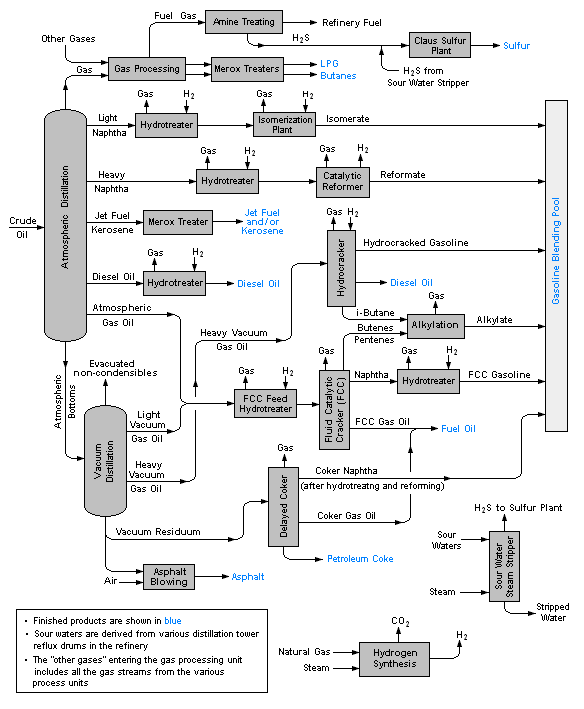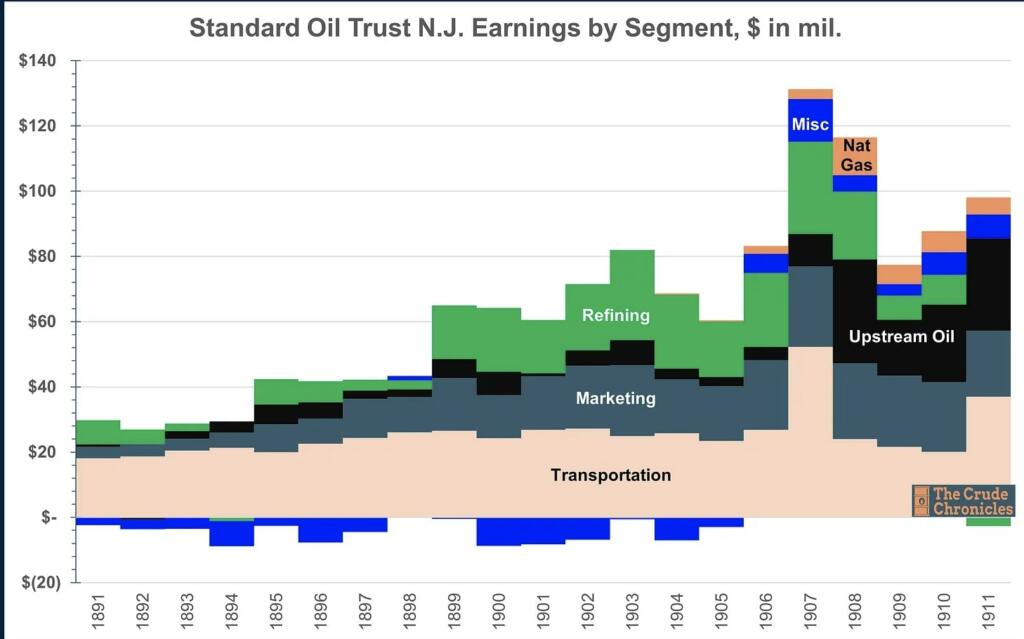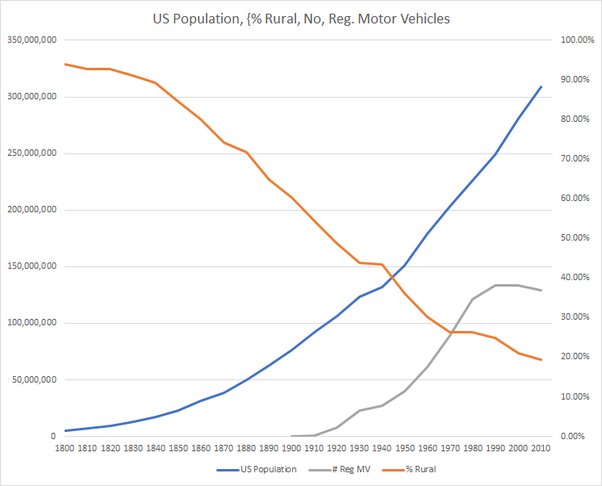Looking at John Rockefeller and Standard Oil. There are a lot of similarities with what Elon And Tesla are doing. Rockefeller was laser focused on reducing costs and waste. Rockefeller used a lot of vertical and horizontal integration to reduce costs.
Deep Technology like nuclear fusion, molecular nanotechnology and reusable rockets will create entire new industries. This is an opportunity and many challenges. It is important to look at the historical creation of foundational giant industries and supply chains. There are also more recent examples of the creation of the internet, electric cars and nuclear fission power.
There are puzzle pieces and steps to create an industry:
1. From Science into Engineering
2. Engineering into Products
3. Products into Business
4. Business into scaled industry
5. Making the scaled industry involves scaling markets and supply chain
Here is how John D. Rockefeller (Standard Oil) created parts of the oil industry and dominated the oil industry broken into the Industry creation steps. The Standard Oil model is being replicated in how Tesla is creating a new electric economy with Master Plan 3. It is also useful in analyzing how potential new technology like nuclear fusion, AI and reusable rockets could become successful to create new industries.
1. From Science into Engineering.
Chemistry was used to develop oil cracking, creating oil byproducts and various aspects of refining. A refinery is a production facility composed of a group of chemical engineering unit processes and unit operations refining certain materials or converting raw material into products of value. Copper Oxides were used to remove sulfur from Ohio oil.
Standard Oil pioneered the process of treating the wood in a kiln to prevent leaking.
Standard Oil developed a kerosene that could be produced with 20% of the sulfuric acid used by competitors, thus greatly reducing costs of production.
2. Engineering into Products
Engineering is used to turn proven science into products. Refineries are built, made more efficient and made larger. Oil is refined into kerosene and then into lubricating oil, gasoline, tar and paraffin.


3. Products into Business
Eventually, hundreds of products are made from each barrel of oil and new markets are developed for the products. The markets are developed and grown for new products. Sales and delivery methods are made to supply global markets (Asia, europe and elsewhere).
4. Business into scaled industry
He bought out other refiners and other oil producers. He employed his own plumbers and almost halved the cost of labor, pipes, and plumbing materials. Coopers charged $2.50 per barrel but Rockefeller cut this to $0.96 when he bought his own tracts of white oak timber. He had his own kilns to dry the wood, and his own wagons and horses to haul it to Cleveland.
He negotiated huge discounts with rail companies to lower the cost of transporting oil and oil products.
His company perfected large steamship tankers to ship oil cheaply overseas.




5. Making the scaled industry involves scaling markets and supply chains.
The Oil Industry enabled to growth of tar for surfaced roads. It also scaled the use of kerosene for lighting. Gasoline and other oil products enabled the growth of rail and then the auto industry.
Raw materials procurement: Standard Oil employed its own crude buying agents rather than using independent contractors like its competitors. Standard Oil built an extensive network of warehouses to hold extra oil in case prices unexpectedly spiked. Standard Oil developed its own sources of crude to ensure constant, cheap supply.
Raw materials transportation: Crude was traditionally transported in wooden barrels. Given the high cost of barrels, Standard Oil purchased forest land and harvested the wood. Standard Oil pioneered the process of treating the wood in a kiln to prevent leaking. Standard Oil later lowered costs even further by investing in tanker rail cars, which at the time were a fairly new invention. Standard Oil built pipelines to transport crude directly from production sites to the refining facilities.
In 1870, when Standard Oil was formed, the price of kerosene was $0.26 / gallon. By 1880, Standard Oil had driven the price down to $0.09 / gallon; the price was further reduced to ~$0.07 per gallon by 1890.




History of Rockefeller and Standard Oil
John D. Rockefeller became the richest person in the world through oil and refinery innovation. His discovery of oil was an important factor but was leveraging scientific and engineering success to develop oil refineries that was the main driver for his wealth. In 20 years in the oil industry, Standard Oil Company captured 90 percent of America’s oil refining and had pushed the price down from 58 cents to eight cents a gallon.
In 1855, Benjamin Silliman, Jr., chemistry professor at Yale, analyzed crude oil. He distilled and purified it. It yielded kerosene which was better than the widely used whale oil. Other by-products of distilling included lubricating oil, gasoline, and paraffin, which made excellent candles.
In 1863, Rockefeller talked oil with Samuel Andrews and two years later they built a refinery together. Rockefeller shunned the drills and derricks and chose the refining end instead. Refining eventually became very costly, but in the 1860s, the main supplies were only barrels, a trough, a tank, and a still in which to boil the oil. The yield would usually be about 60 percent kerosene, 10 percent gasoline, 5 to 10 percent benzol or naphtha, with the rest being tar and wastes.
Rockefeller’s early growth through horizontal combination. He bought out other refiners and other oil producers. He adopted a strategy of vertical integration later.
Rockefeller was constantly looking for ways to save. He built his refineries well and bought no insurance. He employed his own plumbers and almost halved the cost of labor, pipes, and plumbing materials. Coopers charged $2.50 per barrel but Rockefeller cut this to $0.96 when he bought his own tracts of white oak timber, his own kilns to dry the wood, and his own wagons and horses to haul it to Cleveland.
This is echoed today with Elon Musk and Tesla vertically integrating all aspects of the electric car and vehicle charging business.
Rockefeller then struck a supply chain deal with Vanderbilt for lower cost rail transportation of his oil and refined oil products.
Rockefeller and Sam Andrews worked on getting more kerosene per barrel of crude. They searched for uses of the byproducts. They used the gasoline for fuel, some of the tars for paving, and shipped the naphtha to gas plants. They also sold lubricating oil, vaseline, and paraffin for making candles. Other Cleveland refiners, by contrast, were wasteful: they dumped their gasoline into the Cuyahoga River, they threw out other byproducts.
During the early 1880s, the entire oil industry was in jeopardy. The Pennsylvania oil fields were running dry and electricity was beginning to compete with lamps for lighting homes. Rockefeller bet on new oil discoveries near Lima, Ohio. However, this new oil had a lot of smelly sulfur. He had accumulated more than 40 million barrels of that sulfurous oil in tanks. He held onto the oil for two years. Rockefeller hired two chemists, Herman Frasch and William Burton, to figure out how to purify the oil.
The threat of cheap Russian oil from Baku oil fields emerged. The Russian oil was better (more liquid), more abundant and cheaper oil.
1. Rockefeller use more science and engineering. William Burton, who helped clarify the Lima oil, invented “cracking,” a method of heating oil to higher temperatures to get more use of the product out of each barrel.
2. Engineers at Standard Oil helped by perfecting large steamship tankers, which cut down on the costs of shipping oil overseas.
3. Rockefeller made Standard Oil even more efficient. He used less iron in making barrel hoops and less solder in sealing oil cans. In a classic move, he used the waste (culm) from coal heaps to fuel his refineries; even the sweepings from his factory he sorted through for tin shavings and solder drops.
4. Rockefeller studied the foreign markets. He used spies, often foreign diplomats, to help him sell oil and tell him what the Russians were doing. He used different strategies in different areas.
The Russian-American oil war was hotly contested for almost 30 years after 1885. In most markets, Standard’s known reliability would win. Standard would just get its price close to that of the Russians. In some years, Rockefeller had to sell oil for 5.2 cents a gallon—leaving almost no profit margin. Efficiency and innovation beat naturally cheaper oilfields.

Brian Wang is a Futurist Thought Leader and a popular Science blogger with 1 million readers per month. His blog Nextbigfuture.com is ranked #1 Science News Blog. It covers many disruptive technology and trends including Space, Robotics, Artificial Intelligence, Medicine, Anti-aging Biotechnology, and Nanotechnology.
Known for identifying cutting edge technologies, he is currently a Co-Founder of a startup and fundraiser for high potential early-stage companies. He is the Head of Research for Allocations for deep technology investments and an Angel Investor at Space Angels.
A frequent speaker at corporations, he has been a TEDx speaker, a Singularity University speaker and guest at numerous interviews for radio and podcasts. He is open to public speaking and advising engagements.


A good dive into “how things work.’ Thanks.
It’s notable what Rockefeller did NOT do. In a highly competitive international business, he plowed almost all profits into R&D, bringing new refining methods into play on a regular basis, and every related aspect became more efficient and cheaper too.
He did NOT:
– Buy back stock. Economist William Lazarus says >90% of profits of average listed corporations goes to buybacks and dividends, doing nothing to advance R&D, but paying a lot to unproductive shareholders, and goosing the pay of C-Suite execs, like the CEO. The average CEO now lasts just 2 years, meaning they have strong incentive to rake in millions in a short period while investing little in the long-term success of the company.
– Tie compensation to the rise in stock prices.
– Pay an army of lobbyists, accountants, and tax attorneys to devise loopholes to increase profits. Yes, he fought being broken up – unsuccessfully in the end – but the main spinoff of Standard Oil was Exxon, a company that does all the things above, and barely increases its exploration of oil, in order to starve the market and keep oil prices high.
This financialization’, of engineering companies in particular, has destroyed many, including : Boeing, Hewlett-Packard , IBM, and for Canada the huge lose of Nortel, which was Canada one mega tech company. Now lost forever to shady accounting tricks.